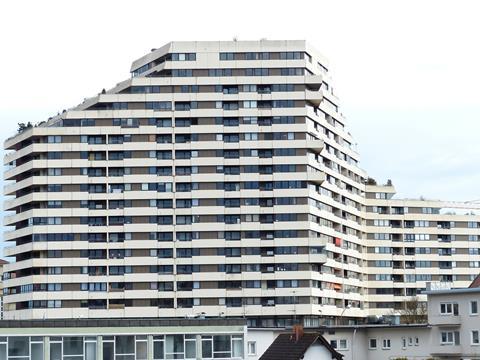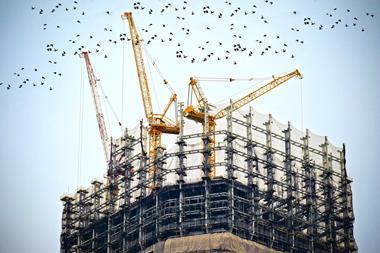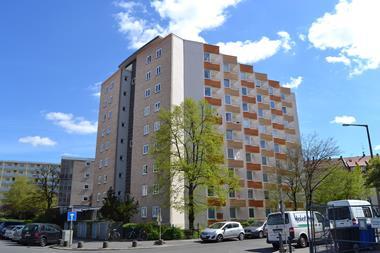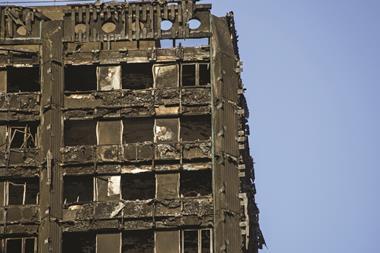It was revealed recently by Ecclesiastical that the cost of traditional building materials is increasing, but could this have a knock-on effect on claims inflation? And what other factors might be at play?
The prices for traditional building materials are rising, according to Ecclesiastical.
The insurer says it is pushing up the cost of reconstruction and repairs for heritage properties by 3.4%
This increase in cost could push up claims inflation and in turn see premiums soar.
Faith Kitchen, heritage director at Ecclesiastical told Insurance Times: “The provisional results of the Ecclesiastical Heritage Building Cost Index show that prices of traditional building materials have increased by 1.2% in the first three months of 2019 compared to the previous quarter (Q4 2018).
“The increasing costs of traditional materials such as handmade brick, hardwood and stone will have an impact in the event of a claim as a rise in the price of traditional materials will result in an increase in the costs of repairing heritage buildings when there is a claim. For clients who own heritage buildings, having regular valuations and the right indexation in place to mitigate the risk of underinsurance is critical.”
Traditional trades
Paul Humphris, specialist claims consultant at Ecclesiastical told Insurance Times: “When dealing with historic buildings the issues are with traditional trades and the availability of the specialist contractors.”
He referenced Notre Dame getting a large sum in donations to restore it following the fire last April, which saw the roof collapse, but highlighted that most historic buildings cannot rely on that kind of support.
“In the UK we have various bodies that are responsible for protecting those sites and making sure that any sort of modernisation is sympathetic. Who is making those decisions will be interesting for the French, of course in theory it is government funded but then you have got some very large funds from businessmen who may want some input,” he said.
Underestimation of repair costs
Last December, Historic England published a guide ‘Insuring Historic Buildings and other Heritage Assets’ following changing circumstances and evolving threats. The guide highlighted that the underestimation of repair and rebuilding costs have created “considerable difficulties” for owners making a claim.
But the executive non-departmental public body also recognises that both regular maintenance and repair is an important strategy in managing risk and emphasises the importance of using a broker.
The guide listed some key concerns for owners and managers, these included:

- Fire
- Lightning, explosion and aircraft
- Storm and flood
- Burst pipes and water leakage
- Malicious damage
- Accidental damage
- Theft subsidence and structural problems
- Building contract
Crux of the matter
Andrew Chesney, chief risk and valuation adviser at Hiscox said that ensuring the right cover is in place for clients and that they understand is the “crux of the matter”.
He told Insurance Times: “Such fluctuations we are prepared for [but] we certainly wouldn’t pass that on to our clients in terms of immediate increases in premiums.
“We, as a lot of the other HNW (High Net Worth) insurers, operate something called ‘Extended Replacement Cover (ERC).” It doesn’t apply to all listed buildings but certainly [for those that are] grade II and two-star properties, which covers the vast majority of heritage properties.
“If there has been a more up-to-date insurance replacement valuation [or assessment] carried out, then should there be any discrepancy between the total building sum insured and what the claim ends up being we will pay that difference with not punitive action to the client.
“There’s enough horribleness and uncertainty in the world it gives them a great degree of comfort.
“But it is very important that this is done by a proper valuer and that it is regularly updated by which I mean, the usual quantum is every five years.”
However, he reiterated that insuring heritage properties isn’t a “one size fits all” due to various factors such as range of materials and the time period it was built.
The ‘B’ word
Chesney said that the root of the problem is incredibly vast, but that some issues on the horizon are Brexit and global currency fluctuations.
In East Anglia he said to get hold of a sizable piece of oak to replace a supporting beam in a house, the likelihood is that it will probably come from France or eastern Europe due to local shortage.
He concluded that the top two risks for heritage properties were fire and escape of water.
Despite this, he doubts that the cost of traditional building materials rising will bump up claims’ inflation substantially.
Hosted by comedian and actor Tom Allen, 34 Gold, 23 Silver and 22 Bronze awards were handed out across an amazing 34 categories recognising brilliance and innovation right across the breadth of UK general insurance.





















































No comments yet